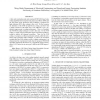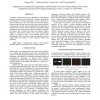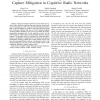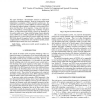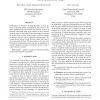ICASSP
2011
IEEE
13 years 3 months ago
2011
IEEE
A first-order-residual/second-order-residual (FOR/SOR) based video coding algorithm that incorporates the super macroblock (SMB) and the inter-frame stripe prediction (ISP) techn...
ICASSP
2011
IEEE
13 years 3 months ago
2011
IEEE
Large vocabulary automatic speech recognition (ASR) technologies perform well in known and controlled contexts. In less controlled conditions, however, human review is often neces...
ICASSP
2011
IEEE
13 years 3 months ago
2011
IEEE
When seeking a sparse representation of a signal on a redundant basis, one might want to convey available a priori information on the observations to the optimization criterion. I...
ICASSP
2011
IEEE
13 years 3 months ago
2011
IEEE
An adaptive spatiotemporal saliency algorithm for video attention detection using motion vector decision is proposed, motivated by the importance of motion information in video se...
ICASSP
2011
IEEE
13 years 3 months ago
2011
IEEE
Abstract—Temporal Dynamic Spectrum Access (DSA) in Cognitive Radio Networks exploits time gaps between the primary users transmissions. In this work, the fundamental performance ...
ICASSP
2011
IEEE
13 years 3 months ago
2011
IEEE
This paper introduces a discriminative extension to whole-word point process modeling techniques. Meant to circumvent the strong independence assumptions of their generative prede...
ICASSP
2011
IEEE
13 years 3 months ago
2011
IEEE
This paper presents a fast algorithm for restoring video sequences. The proposed algorithm, as opposed to existing methods, does not consider video restoration as a sequence of im...
ICASSP
2011
IEEE
13 years 3 months ago
2011
IEEE
In the task of mispronunciation detection, the cross-speaker degradation and some other confusing nuisances are the challenging problems demanding prompt solution. In this paper, ...
ICASSP
2011
IEEE
13 years 3 months ago
2011
IEEE
In this paper we attempt to quantify the ability of naive listeners to perform speaker recognition in the context of the NIST evaluation task. We describe our protocol: a series o...
ICASSP
2011
IEEE
13 years 3 months ago
2011
IEEE
Current techniques used in pipelining recursive filters require significant hardware complexity. These techniques attempt to preserve the exact frequency response of the origina...
